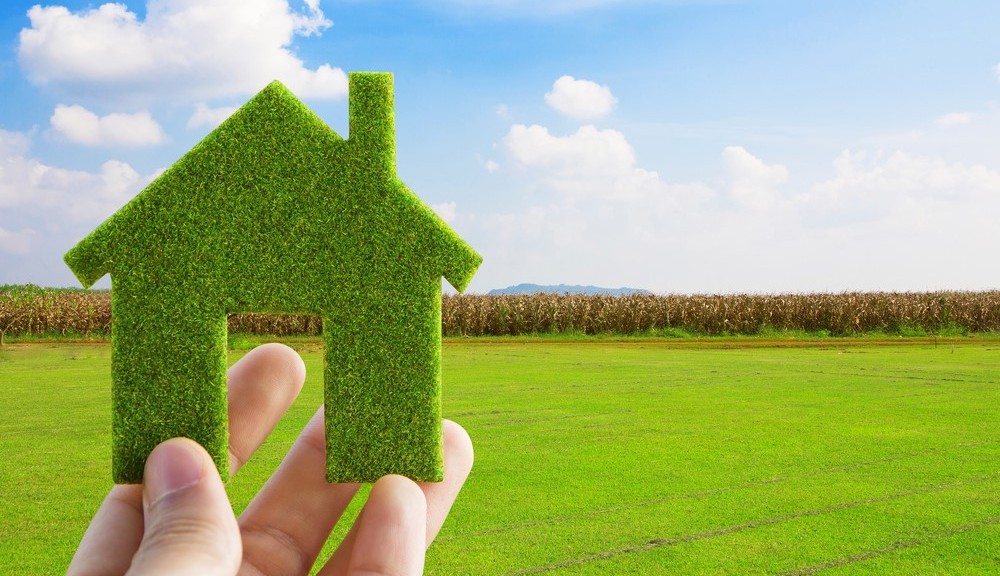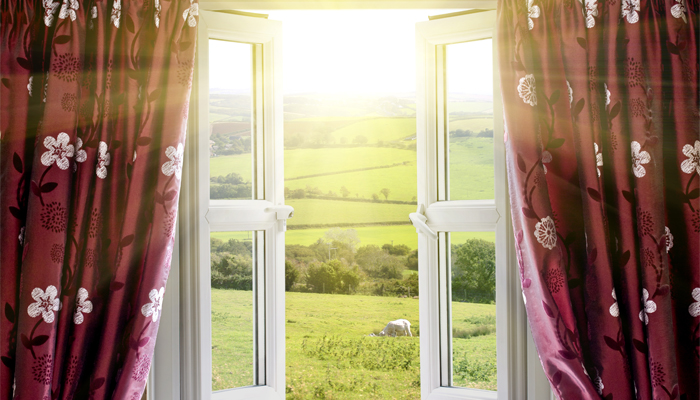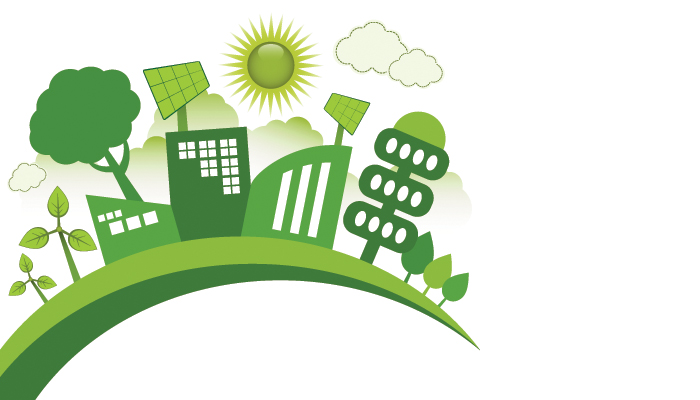Can Luxurious Buildings be Eco-Friendly too? Yes, it is Possible
Mar 08, 2016 By Fenesta

Learn how to enhance your building's green footprint.  www.shutterstock.com Co-exist with nature Going green does not mean you have to compromise on luxuries. Age-old wisdom leads the way. It says that every construction must account for its green contribution. From site planning and design to building materials and fixtures, green buildings need to be environment-friendly and resource-efficient. So, what makes a building eco-friendly? Read on to know more. Natural Energy Harnessing Mother Nature's reserves through layouts with glass-paneled doors, windows or skylights adds aesthetic value to the building design. Specific types of glass offer insulation from heat and sound. Building structures that allow cross ventilation of air also aid in reducing the usage of cooling devices.
www.shutterstock.com Co-exist with nature Going green does not mean you have to compromise on luxuries. Age-old wisdom leads the way. It says that every construction must account for its green contribution. From site planning and design to building materials and fixtures, green buildings need to be environment-friendly and resource-efficient. So, what makes a building eco-friendly? Read on to know more. Natural Energy Harnessing Mother Nature's reserves through layouts with glass-paneled doors, windows or skylights adds aesthetic value to the building design. Specific types of glass offer insulation from heat and sound. Building structures that allow cross ventilation of air also aid in reducing the usage of cooling devices.  www.shutterstock.com Environment-friendly Raw Materials There are several eco-friendly raw materials that one can use while construction a home. For example, Unplasticized Polyvinyl Chloride (UPVC) can be used instead of chemically treated timber. Along with providing thermal insulation and being energy-efficient, UPVC is recyclable. Any air-conditioned building with well designed UPVC windows and doors can save up to 30% energy. Other environment-friendly building materials include bamboo, sun-dried bricks, fly-ash sand lime gypsum bricks, concrete paving blocks, clay roofing tiles and ferro-cement products. Power-saving Home Appliances Energy-efficient home appliances help reduce carbon emission. While buying appliances like air conditioners or refrigerators look for the Energy Star ratings and opt for the latest models. Appliances like top loading washing machines, efficient flushing mechanisms, automatic room lighting control systems, help keep your utility bills low. The Bigger Picture Using solar energy is a practical alternative to the traditional, non-renewable sources. The photovoltaic cells used in a solar panel not only last a lifetime and require minimal maintenance, but also are extremely affordable in the long run. The Long-term Commitment Using sustainable communal practices is equally important. Re-cycling rainwater, harnessing solar energy, treating and reusing wastewater at the source, segregating dry waste from wet, are some changes that a community can adopt in order to create and sustain a healthy environment. After all, the choices we make contribute to the wellbeing of our environment and that of future generations.
www.shutterstock.com Environment-friendly Raw Materials There are several eco-friendly raw materials that one can use while construction a home. For example, Unplasticized Polyvinyl Chloride (UPVC) can be used instead of chemically treated timber. Along with providing thermal insulation and being energy-efficient, UPVC is recyclable. Any air-conditioned building with well designed UPVC windows and doors can save up to 30% energy. Other environment-friendly building materials include bamboo, sun-dried bricks, fly-ash sand lime gypsum bricks, concrete paving blocks, clay roofing tiles and ferro-cement products. Power-saving Home Appliances Energy-efficient home appliances help reduce carbon emission. While buying appliances like air conditioners or refrigerators look for the Energy Star ratings and opt for the latest models. Appliances like top loading washing machines, efficient flushing mechanisms, automatic room lighting control systems, help keep your utility bills low. The Bigger Picture Using solar energy is a practical alternative to the traditional, non-renewable sources. The photovoltaic cells used in a solar panel not only last a lifetime and require minimal maintenance, but also are extremely affordable in the long run. The Long-term Commitment Using sustainable communal practices is equally important. Re-cycling rainwater, harnessing solar energy, treating and reusing wastewater at the source, segregating dry waste from wet, are some changes that a community can adopt in order to create and sustain a healthy environment. After all, the choices we make contribute to the wellbeing of our environment and that of future generations.  www.shutterstock.com Just thinking green is not enough. The onus of the environment lies on us; as the saying goes, "
www.shutterstock.com Just thinking green is not enough. The onus of the environment lies on us; as the saying goes, "










Comments